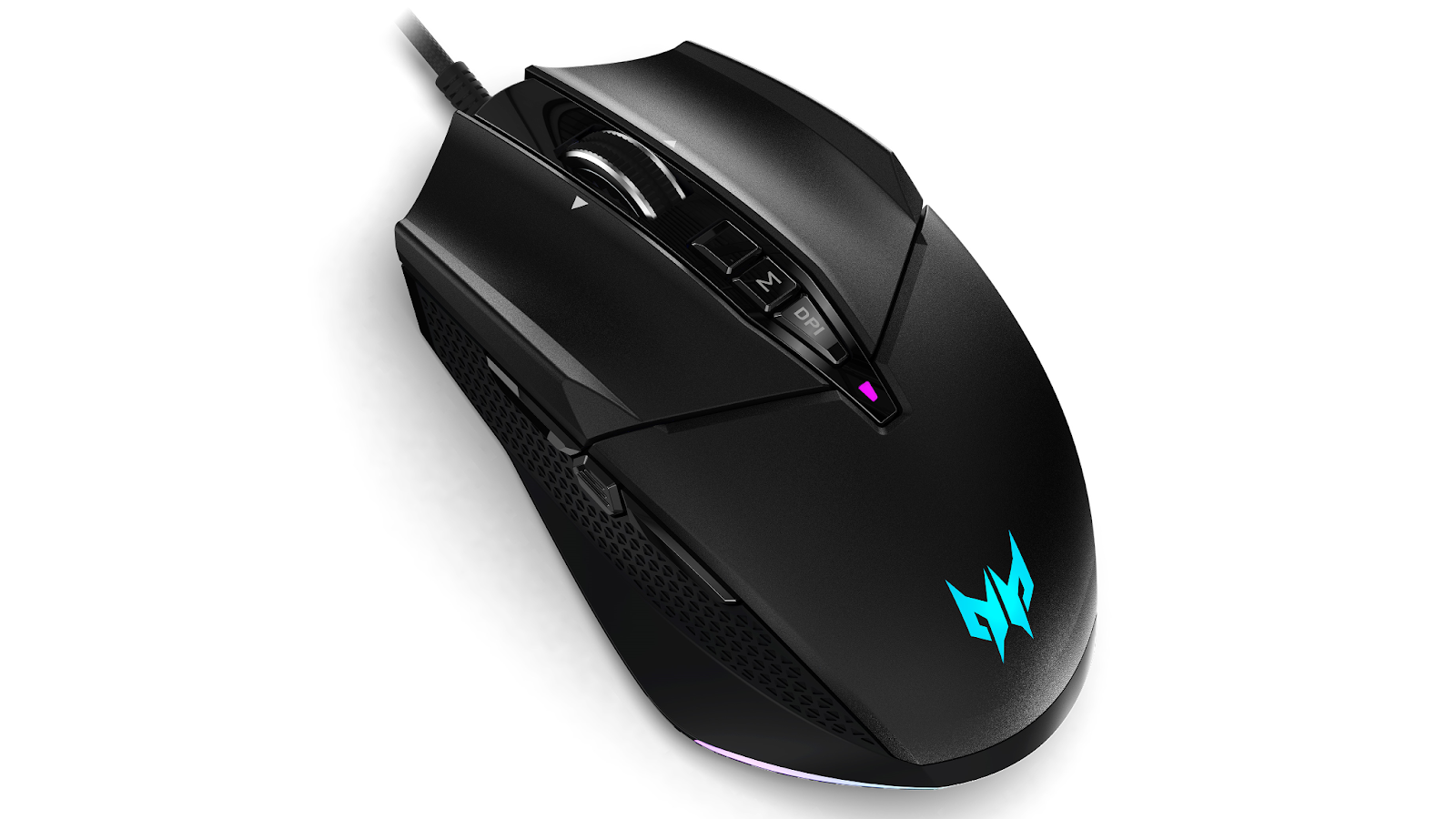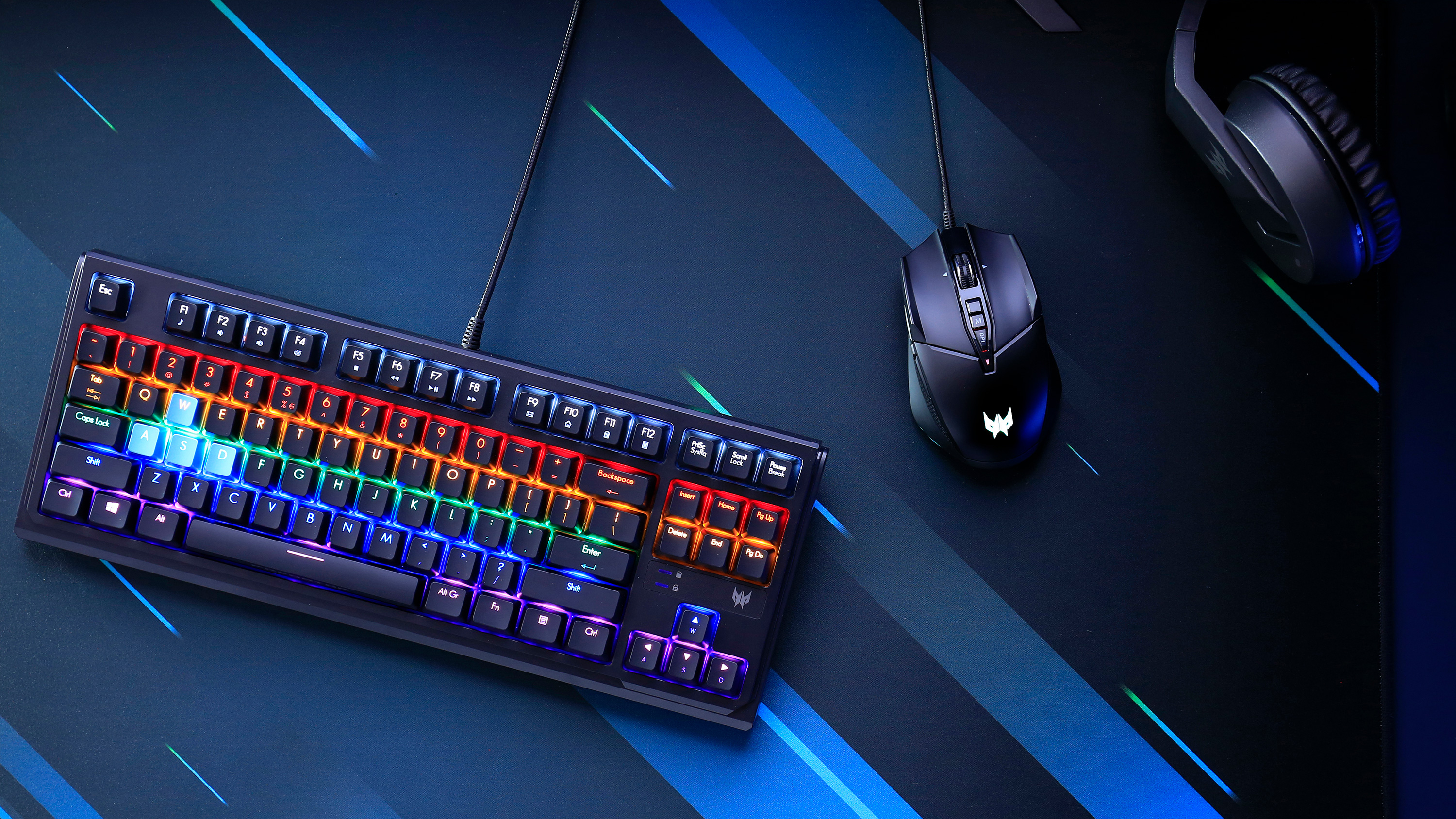Acer Joins the Polling Rate Race With 2,000 Hz Predator Cestus 335 Gaming Mouse (Updated)
Update 5/27/2021 5:16 p.m. ET: Acer confirmed to us that the Predator Cestus 355' 2,000 Hz polling rate doesn't have minimum CPU, GPU or monitor requirements but noted that "it's better with a powerful PC" because the higher polling rate uses more CPU resources.
Original article 5/27/2021, 9:45 a.m. ET:
Acer is joining the likes of Razer and Corsair in pushing gaming peripherals that changes the rate at which your mouse sends data to your PC. Most gaming mice offer polling rates of 1,000 Hz max, meaning it sends a report to your PC telling it of your mouse’s position 1,000 times per second. But the Acer Predator Cestus 335 announced today goes up to 2,000 Hz. While most gamers are still happy with 1,000 Hz, the Predator Cestus 335 may be introducing a happy middle ground for extreme gamers.
Let’s do some (painless) math. When a mouse has a 1,000 Hz polling rate, it can take as little as 0.001 second -- or 1ms -- to send a report. 1 second divided by 1,000 reports equals 0.001 second per report. With 2,000 Hz, the Cestus 335’s expected delay decreases to 0.5ms (1 second divided by 2,000 reports equals 0.0005 second).
The Predator Cestus 335 is extreme in its attempt to deliver twice the number of reports per second than most of the best gaming mouse options today. But there are already more extreme options. This year, the Razer Viper 8K Hz and Corsair Sabre RGB Pro mice came out, as well as the Corsair K70 RGB TKL and Corsair K65 RGB Mini keyboards. Each has an 8,000 Hz polling rate (yes, some of the best gaming keyboards are getting pulled into the trend too) and, therefore, have input delays as low as 0.125ms compared to the Cestus 335’s 0.5ms.
Of course, the question becomes do you really need those extra Hz? In action, I did find the Viper 8K Hz to bring an improvement in tracking. For example, when I moved my mouse around in an oval, I saw more instances of the pointer with the 8,000 Hz mice compared to when using a couple 1,000 Hz mice. I also fared slightly better in anecdotal tests such as the Human Benchmark reaction time test, although mouse comfort and buttons are also a factor. When gaming, however, there was so much going on that I didn’t notice any obvious visual gains or gaming advantages.
According to Razer, the increased polling rate might have been more effective if I had a more powerful PC and a display with a faster refresh rate. Acer hasn’t confirmed yet, but it’s possible that the Predator Cestus 335 will also come with recommended PC and/or monitor specs.
Get Tom's Hardware's best news and in-depth reviews, straight to your inbox.
That will be a big factor in if the polling rate race takes off among gamers. When we tested the Corsair Sabre RGB Pro, we noticed a roughly 6-10% spike in CPU usage when using an AMD Ryzen 7 3700X. But we’d expect the 2,000 Hz Predator Cestus 335 to be less taxing than an 8,000 Hz mouse.
Besides a high polling rate, the Predator Cestus 335 is packing a PixArt 3370 sensor with the ability to hit up to 19,000 CPI sensitivity.
The mouse should also make it easy to toggle through 5 preset CPI levels and profiles, all customizable via Acer’s QuarterMaster software. That’s also where gamers will be able to program the mouse’s 10 programmable buttons. Photos Acer shared with the press show three side buttons, dedicated macro, CPI and profile buttons and a scroll wheel that can also move left and right. Of course, there’s also a fair amount of RGB here.
Ultimately, the Predator Cestus 335 seems to have a decent featureset here, and eSports-level players may jump at the opportunity at cutting input delay -- even if by a hair. 2,000 Hz should, hopefully, call for less extreme PC specs, but we’ll have to wait until testing the mouse to know for sure.
Acer doesn’t have a price or release date for the Predator Cestus 335 yet.

Scharon Harding has over a decade of experience reporting on technology with a special affinity for gaming peripherals (especially monitors), laptops, and virtual reality. Previously, she covered business technology, including hardware, software, cyber security, cloud, and other IT happenings, at Channelnomics, with bylines at CRN UK.
-
Findecanor I believe light weight, and a carefully tuned weight distribution and sensor placement are the most significant properties for making a responsive mouse.Reply
Anyway, the reason why the high polling rate makes a difference is that the HID spec for mice had copied the PS/2 mouse protocol — which sends updates in a continuous stream, which is ill suited for USB's polling model.
If the HID protocol instead had been designed to cater for polling at the right time rather than often, then we could have had just as fast mice without any need for fancy hardware or the need for a faster CPU just to read a peripheral better.
I think it could be done (OS internals permitting) with a custom protocol (which would require drivers), or even better: a revision to the HID protocol ... but then manufacturers wouldn't have numbers to brag with to write on the box.


